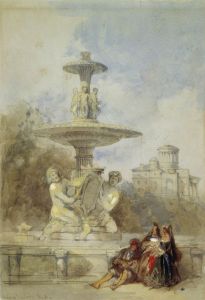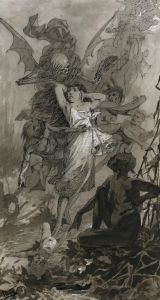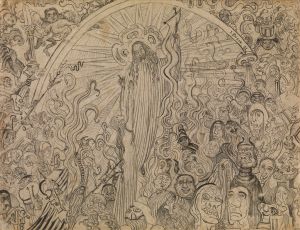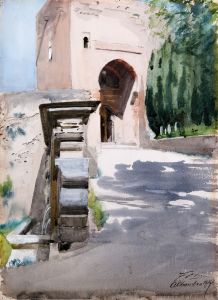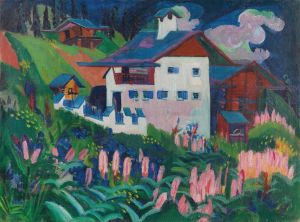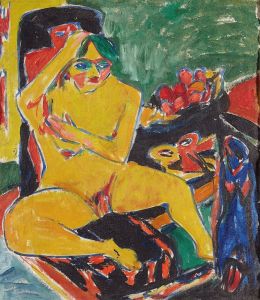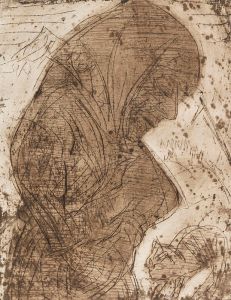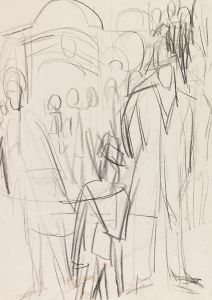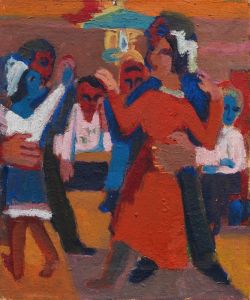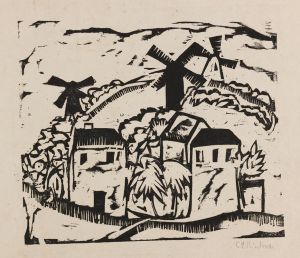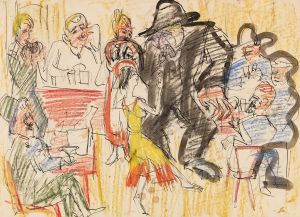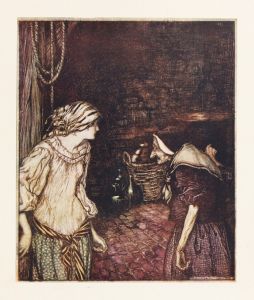
Kirche St. Gereon in Köln I
A hand-painted replica of Ernst Ludwig Kirchner’s masterpiece Kirche St. Gereon in Köln I, meticulously crafted by professional artists to capture the true essence of the original. Each piece is created with museum-quality canvas and rare mineral pigments, carefully painted by experienced artists with delicate brushstrokes and rich, layered colors to perfectly recreate the texture of the original artwork. Unlike machine-printed reproductions, this hand-painted version brings the painting to life, infused with the artist’s emotions and skill in every stroke. Whether for personal collection or home decoration, it instantly elevates the artistic atmosphere of any space.
Ernst Ludwig Kirchner was a prominent German expressionist painter and one of the founding members of the artist group Die Brücke (The Bridge), which played a pivotal role in the development of modern art in the early 20th century. Kirchner's work is characterized by its bold use of color, dynamic compositions, and emotive subject matter. Among his many works, "Kirche St. Gereon in Köln I" is a notable piece that reflects his unique style and artistic vision.
"Kirche St. Gereon in Köln I" is a painting that depicts the Church of St. Gereon in Cologne, Germany. This church is one of the oldest in Cologne, with a history that dates back to the Roman Empire. It is renowned for its distinctive architecture, particularly its decagonal dome, which is a rare feature in church architecture. The church has been a subject of interest for many artists due to its historical significance and architectural beauty.
Kirchner's depiction of the Church of St. Gereon is infused with the expressionist style that he is known for. The painting likely captures the church in a way that emphasizes its structural forms and the emotional impact of its presence. Kirchner's use of color and brushwork would have been aimed at conveying a sense of movement and vitality, characteristics that are hallmarks of expressionism. His work often sought to express the inner feelings of the artist and the emotional experience of the subject matter, rather than a realistic representation.
During the time Kirchner painted "Kirche St. Gereon in Köln I," he was deeply involved in exploring urban themes and the psychological effects of modern life. This painting can be seen as part of his broader exploration of the tension between tradition and modernity, a common theme in his work. The choice of a historical church as a subject might reflect Kirchner's interest in the juxtaposition of the old and the new, a theme that resonated with many artists of his time as they grappled with the rapid changes brought about by industrialization and urbanization.
Kirchner's work, including "Kirche St. Gereon in Köln I," has been influential in the development of modern art. His approach to form and color has inspired countless artists and continues to be studied for its innovative contributions to the expressionist movement. The painting is a testament to Kirchner's ability to capture the essence of his subjects in a way that transcends mere representation, offering viewers a glimpse into the emotional and psychological landscape of early 20th-century Europe.
While specific details about the painting's creation, such as the exact date or the circumstances under which it was painted, are not widely documented, "Kirche St. Gereon in Köln I" remains an important part of Kirchner's oeuvre. It reflects his enduring interest in architecture, his mastery of expressionist techniques, and his ability to convey complex emotional states through his art. As with many of Kirchner's works, this painting invites viewers to engage with the world in a more introspective and emotionally resonant way.





